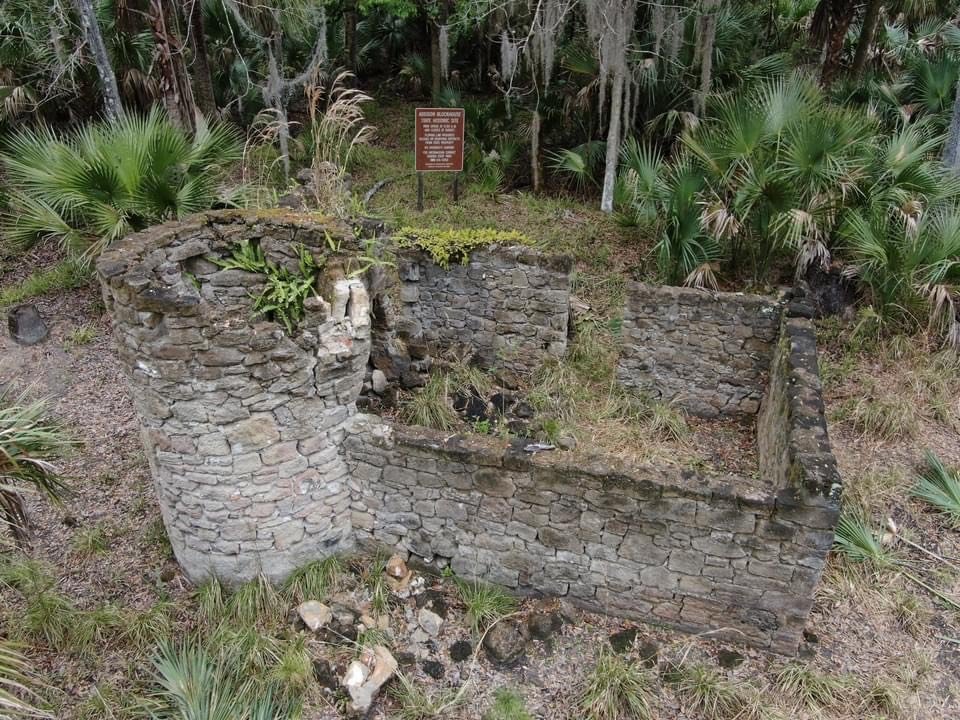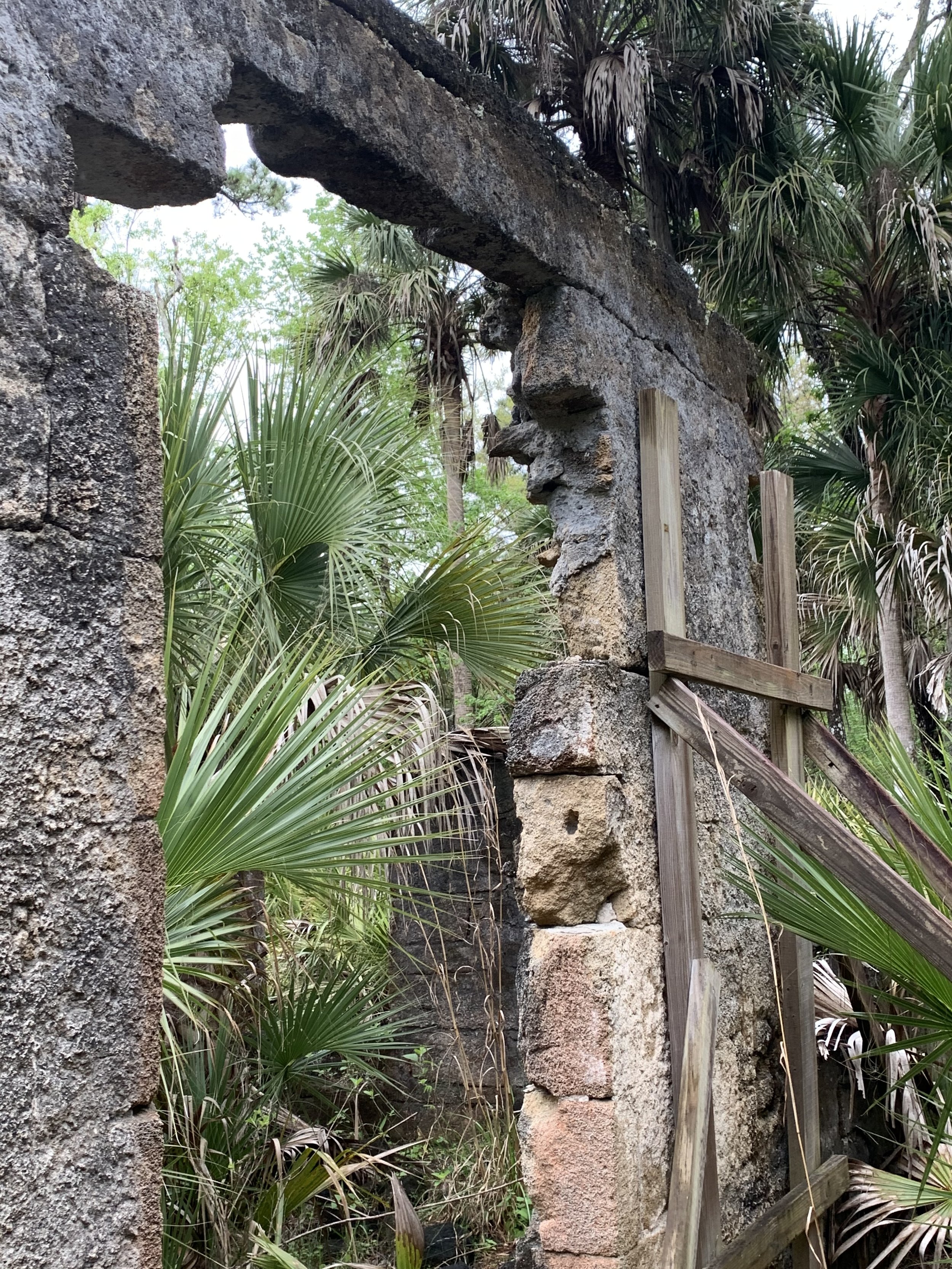
McRae Sugar Mill
In 1825, brothers Kenneth and Duncan McRae purchased about one-fourth of the former Addison Plantation owned by Thomas Dummett. In 1832, they built a plantation and steam-powered sugar mill using the Addison house and outbuildings already on the property. They grew and processed sugar at the site from 1832 to 1836. A severe freeze during the winter of 1835 and the Second Seminole War ended their visions of growing and processing sugarcane for profit.
In early 1836 the plantation was burned and in late February 1836 a militia group from South Carolina fortified the detached kitchen for use as a defensive bulwark. A cannon named “McDuffie” after a fallen comrade, was placed on the roof of the former kitchen, which is now know as the Addison Blockhouse. The main house and other buildings were destroyed, although the slave quarters were left undisturbed, as was the custom of the Seminoles.
Troops assembled near the Blockhouse, but the Seminoles often ambushed those who ventured out. Three were killed and more wounded. The men received orders to abandon the camp and move west, so on March 15, 1836, most of the volunteers at Camp McRae left on a three-day march to the Fort Volusia on the east side of the St. Johns River. They left many of their wounded behind in a nearby wooden stockade with volunteers to care for them, where they were rescued later. After this, the plantation was abandoned.
McRae Plantation ruins and the Addison Blockhouse are located in the wilderness about a mile west of Ormond Lakes, which is off U.S. 1 north of Ormond Beach. Unfortunately, we could not take pictures of the ruins as they are in the wilderness in an area within the Tomoka State Park not accessible to the public.
In March 2021, Donna Drew one of our viewers, communicated with us to let us know she was able to visit the McRae Plantation and the Addison Blockhouse with the help of Tomoka State Park Rangers. She was kind enough to share the pictures she took in that visit and authorized us to post them here. Thanks to Donna we can share some very nice pictures of these ruins.










